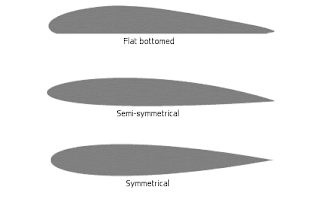Sorry that I have not been posting for a while! Here is a diagram of the parts of a radio control plane, or any plane.
Two parts of the RC plane that I have not mentioned yet is the Vertical Stabilizer and the Horizontal Stabilizer. With a lack of either one of these components, an RC plane is . . . well, . . . very unlikely to fly. So, why are these parts important? What shape and size should they be?
HORIZONTAL STABILIZER
The horizontal stabilizer control the pitch (up, down) of the plane. Without this, you would have no control over the pitch of your RC plane, regardless of whether or not you are putting elevator inputs (what controls the pitch of the plane, see diagram) on your transmitter, which is what you control the movement and speed of the RC plane with.
VERTICAL STABILIZER
A flight without a vertical stabilizer would have similar effects, except that you would have not control of the yaw (right, left) of the radio control plane. The rudder, which is positioned on the vertical stabilizer is not used for turning the plane but can be very useful in crosswind landings to turn the plane without tilting it.
AILERONS
Ailerons are the control surface that is used for turning an RC plane. Although rudder can turn a plane as well, it is not as effective as ailerons which tilt the plane right or left.
HOW BIG SHOULD THEY BE?
After searching for about half an hour on the internet, I found that there is a real lack of information about vertical and horizontal stabilizers. I did find some information, from the makers of the RC plane youtube channel called FliteTest that you should check out. They have a great web page on what the sizes of these should be. Here is some of that info:
Ailerons
The aileron surface area should be about 10% - 12% of the area of half the wing surface. If we are using 10%, this means that if I have a wing that has an average chord (width) of 9cm, and a wingspan (length) of 95cm, then, the wing's area will be . . . 855cm square because we are multiplying the length by the width. Then, we need half the wing area. For 855cm, this would be 427.5cm. Finally, divide 427.5 by 10 to get 10% and the area of each aileron should total . . . 42.75cm.
Vertical Stabilizer
The vertical stabilizer should be 10% of the
total wing area (not half). For this, you can just take the total wing area (length * width for a rectangular wing, if not rectangular, use the average width or chord) and divide by 10 for ten percent of the total wing area, which is the recommended size for a vertical stabilizer.
Horizontal Stabilizer
The horizontal stabilizer should be about 25% of the total wing area. For example, if the wing area is 956 cm square, then divide by 4 to get the recommended size for the horizontal stabilizer.
956cm square wing area / 4 = 239cm square. This means that the horizontal stabilizer should have an area of 239cm square.
I hope that this information will help you to find the appropriate size for some of the different components of your RC plane when you design one.
















